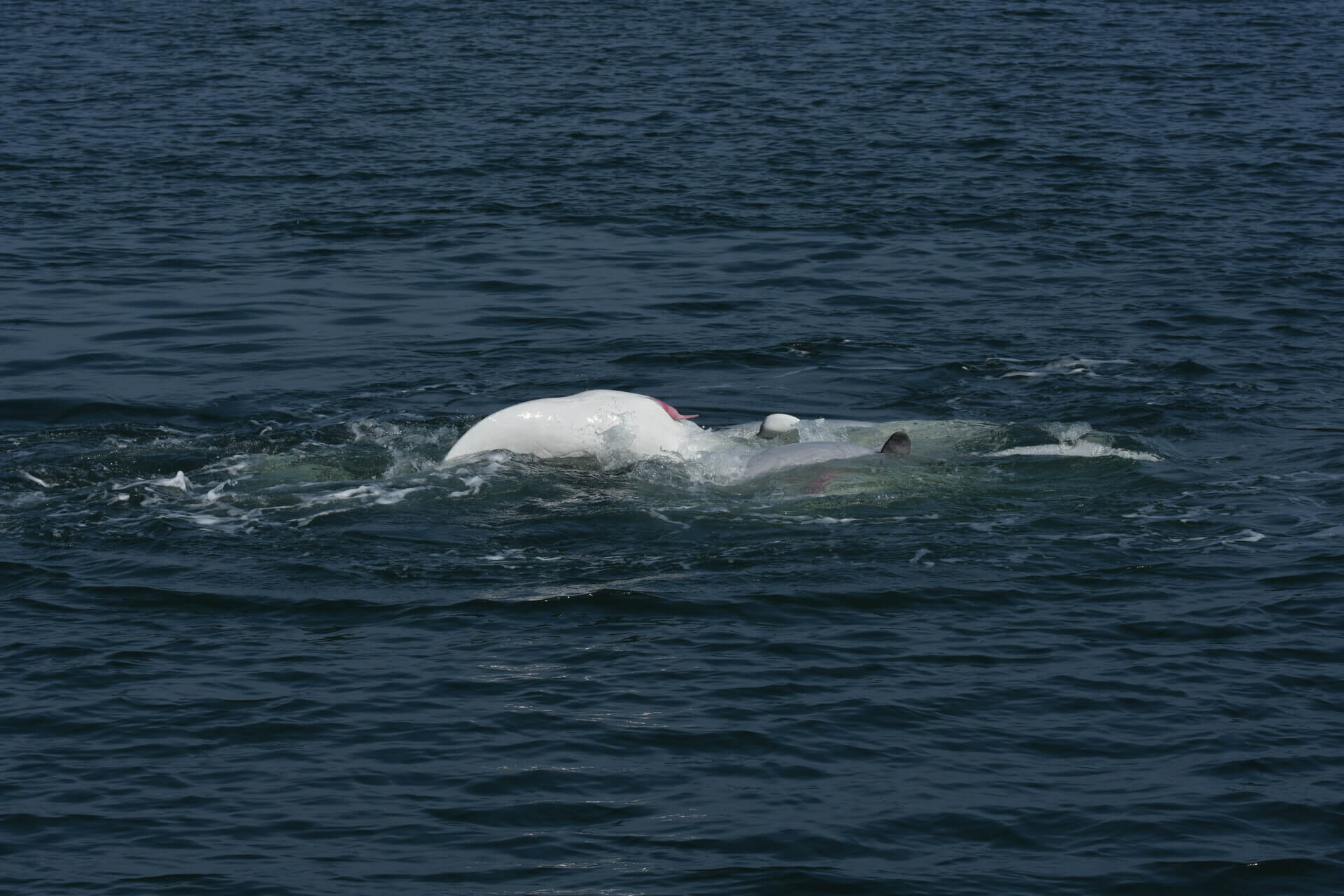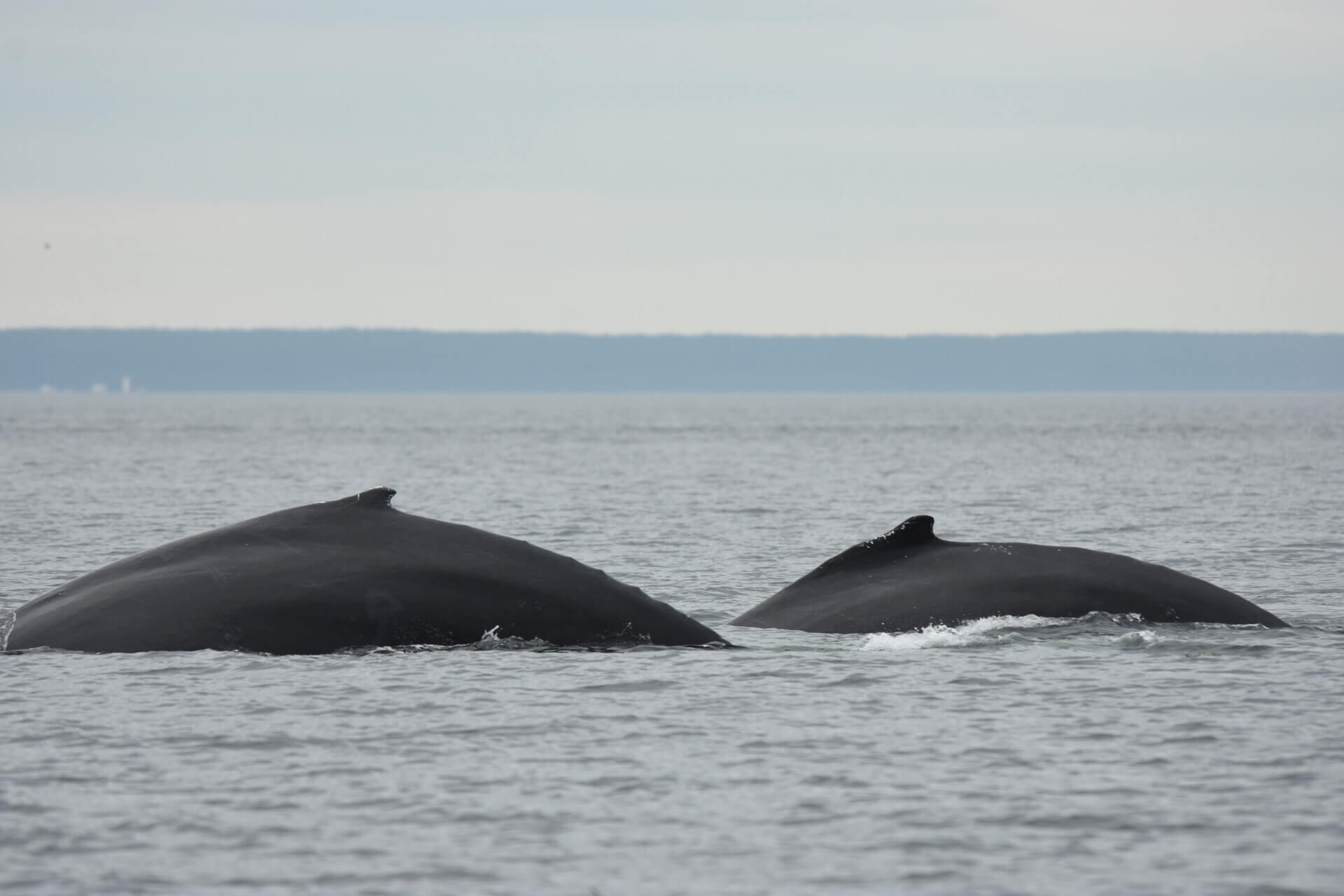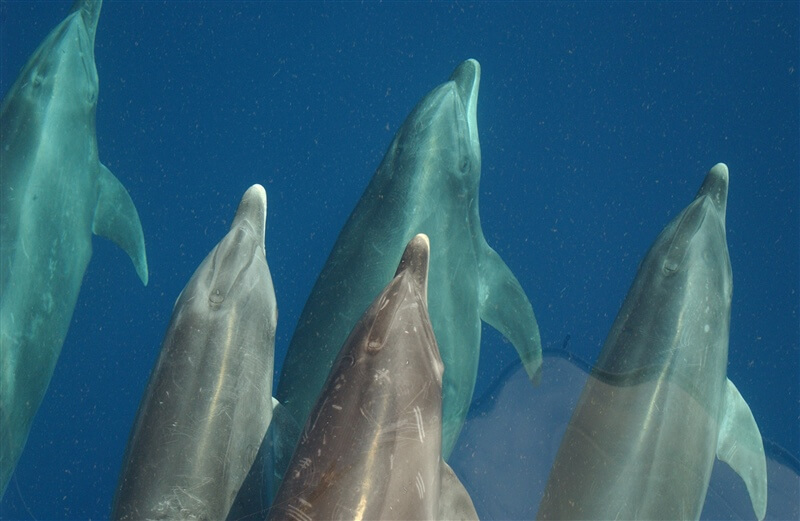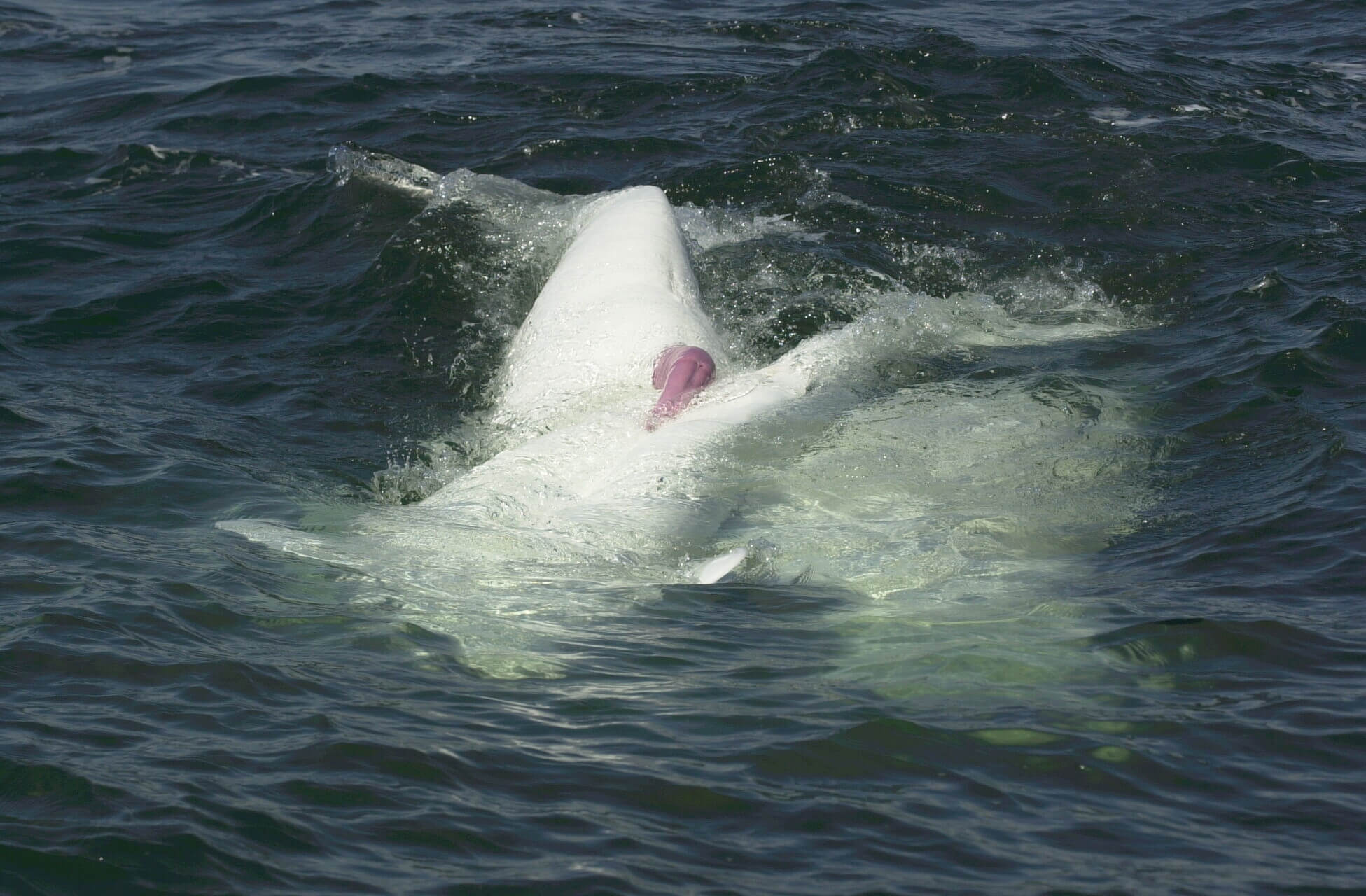An article published a few weeks ago relates an unexpected interaction between two male humpback whales. Indeed, the two bulls were caught on video… mating! The scene certainly raised a few eyebrows!
Although this type of behaviour has already been observed in the animal kingdom between two individuals of the same sex, these two humpbacks had a lot of people talking! Even if they are relatively unknown to the general public, the sex lives of cetaceans consist of a multitude of purposeful and varied socio-sexual behaviours that are notably used to resolve a number of social issues between individuals.
What is socio-sexual behaviour?
Socio-sexual behaviours manifest themselves in different types of sexual interactions involving one or more individuals. Examples include pelvic thrusts, exposure and rubbing of erections and genitals, masturbation and penetration of the genital slit. These behaviours are carried out not with the aim of reproducing, but rather in a social context. No births will ever result from these interactions.
Whether in captivity or in the wild, indications of non-reproductive sexual behaviour have been identified in 35 of the 87 known species of cetaceans. This statistic comes from the book Sex in Cetaceans: Morphology, Behavior, and the Evolution of Sexual Strategies. However, this number could be underestimated considering how difficult it is to study this topic.
Indeed, most cetaceans, including the humpback whale, lead a fairly discreet sexual life. Additionally, a large number of the aforementioned socio-sexual behaviours have been observed in individuals living in captivity.
Why mix social functions and sexuality?
Although the different functions of socio-sexual behaviours are challenging to identify, a number of hypotheses have nevertheless been put forward. A study published in the scientific journal Marine Mammal Science addresses these hypotheses. Firstly, non-reproductive sexual behaviours might be used to express dominance. Dominance is defined as a relationship of power between two individuals. This hypothesis might help explain the mating between the two male humpbacks in which one individual firmly mounted its companion, which appeared to have a head injury. The dominant cetacean was therefore the animal penetrating the genital slit of the thinner individual.
Besides displays of dominance, socio-sexual behaviours have been shown to be used to develop and maintain alliances and long-term relationships between individuals, as is the case in bottlenose dolphins. For a number of species, sex life also helps reduce social tensions between individuals in a group.
Juveniles may also be isolated by adult males, who will then proceed to penetrate the genital slits of their younger peers. This interaction is considered to be a sort of educational practice run for future mating. Thus, they increase their odds of successful copulation, which, in the water with no arms and no support of any kind, is quite a feat! This behaviour has notably been observed in St. Lawrence belugas.
Everyone’s included!
Socio-sexual behaviours are more commonly observed in toothed whales such as belugas, porpoises and dolphins, but have also been identified in rorquals. They are often observed between two individuals of the same sex, but can also involve animals of opposite sexes. Generally speaking, non-reproductive sexual behaviours are less subtle in males, which makes them easier to study. However, females of several species such as the bottlenose dolphin (Tursiops truncatus) have been shown to participate in socio-sexual play such as masturbation. In certain species, socio-sexual behaviours are not limited to sexually mature individuals, as juveniles as well as post-reproductive individuals may also partake in these games!
Belugas: Bonobos of the St. Lawrence
When it comes to studying socio-sexual behaviours in cetaceans, the St. Lawrence Estuary is the perfect laboratory thanks to belugas. Indeed, these white whales, even if they only breed in spring, nevertheless maintain a highly active sex life all year round. In an interview on Radio-Canada’s Années Lumières, GREMM scientific director Robert Michaud explains that sexuality plays a very important role in the forging of alliances between males.
He also elaborates on the fact that the development of these lasting bonds between males seems to take place through both physical and sexual contact. Erections are commonplace amongst juveniles, who do not hesitate to rub up against one another, a behaviour that is also observed in certain other cetaceans.
All these sexual games were able to be observed thanks to the use of drones, a subtle, modern and effective means of studying the complex behaviours of St. Lawrence cetaceans without disrupting their daily activities!








